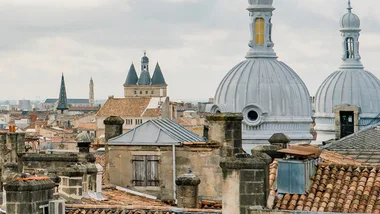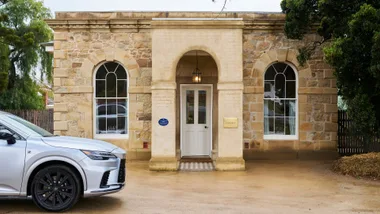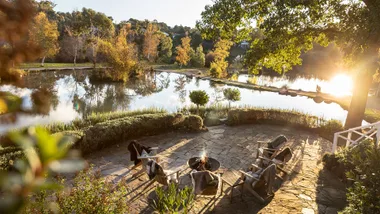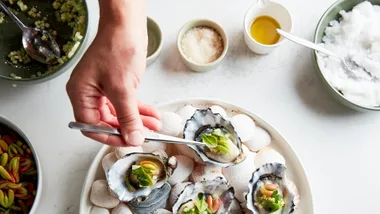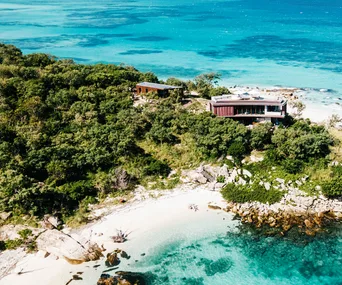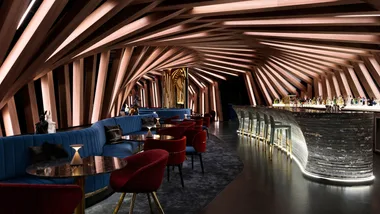GETTING THERE
Singapore Airlines operates 121 flights a week from Sydney, Melbourne, Adelaide, Perth and Brisbane to Singapore, and SilkAir from Darwin, connecting to two daily flights a day to Mumbai – one on an A380.
Air India flies once daily from Melbourne and Sydney to Delhi, connecting to Mumbai.
EAT
Soam
Sadguru Sadan, Grant Rd (opposite Babulnath Temple), Girgaum (near Kemps Corner); +91 22 2369 8080
Pali Bhavan
10 Aadarsh Nagar, Pali Naka, Bandra West; +91 22 2651 9400
Shree Thaker Bhojanalay
1st Floor, 31 Dadiseth Agyari Lane, off Kalbadevi Rd, Bhuleshwar; +91 22 2201 1232
Elco
2A, Elco Market, 46 Hill Rd, Bandra West; +91 22 6587 7171
BusaGo
St John Rd, Pali Hill, Bandra West; +91 22 6127 8897
Bademiya
Tulloch Rd, Apollo Bunder, Colaba; +91 22 2284 8038
Bachelorr’s
Marine Dr, opposite Chowpatty Beach; +91 22 2368 2211
Mahesh Lunch Home
8B Cawasji Patel St, Fort; +91 22 2287 0938
Trishna
7 Sai Baba Marg, Kala Ghoda, Fort; +91 22 2270 1623
Pal’s Fish Corner
8 Kailash Shopping Centre, 16th Rd, Bandra West; +91 22 2600 2995
Yazdani Irani Café
11 Cawasji Patel St, Fort; +91 22 2287 0739
Masala Library
Ground Floor, First International Financial Centre, BKC, Bandra; +91 22 6642 4142
Though the city’s official name changed to Mumbai years ago, locals still fondly refer to their home town as Bombay, and so do I. This megalopolis of 20 million and rising is at once mesmerising, exhilarating, edgy, challenging, enthralling, sometimes horrifying. And yet, despite the sensory overload, as soon as I step off the plane and plunge into the city’s frenzied traffic I feel at home. I love Bombay, particularly the diversity and versatility of its food culture.
There’s no better way to explore the city than through its food – from street vendors and workers’ canteens to cafés and restaurants. Bombay’s vast population is drawn from many regions, castes and religions, each represented by distinctive food. The hardest decision is where to start. Because of the city’s size, it’s best to divide explorations between north and south, or NoBo and SoBo as the locals say.
Popular with in-the-know residents and one of my favourite places for lunch is Soam, a chic, modern restaurant in the southern district of Girgaum with a vegetarian menu that showcases Gujarati and Marwari cuisine, the latter from an ethnic group in Rajasthan.
I always start with several of their chaat snacks, listed as Mumbai street food on the menu: bhel puri, sev puri, pani puri, dahi puri and dahi papdi chaat, each a mouthful of puffed rice, potato, tangy tamarind sauce and more. Then I try a few farsan snacks: palak cheese samosa, dhokla (steamed rice and white lentil cakes) and makai wadi (fried corn cakes) or the jain paanki, chickpea batter spread between banana leaves and steamed. The sweet and salty lassi is heavenly, especially the mango flavour. The sugarcane juice is also worth a try; Soam uses bottled water, unlike some street vendors, so it’s safe to drink. There are no bookings, so be prepared to queue.
Still in the south, after a morning walk through Crawford Market, I wend my way through the congested streets of the wholesale cloth market, through the jewellery and kitchen utensil markets to find Shree Thaker Bhojanalay, one of the city’s hidden gems.
It’s a modest eatery with the ambience of a workers’ canteen, serving a delicious vegetarian thali, considered one of the city’s best. The menu changes regularly but expect corn dhokla (steamed corn cakes), aloo rasawala (potato cooked in a spiced curd gravy), vegetable pulao and more. The variety of flatbreads is second to none and friendly staff insist on constantly refilling plates.
Street vendors work on most corners in the city, serving food cooked on the spot. Stick to places packed with locals and ask vendors lots of questions – they’ll be as curious about you as you are about their food. Take a walk around the southern Colaba and Fort districts, admire their colonial edifices and Neoclassical architecture and then stop off at one of the street vendors along Khao Galli, teeming at lunchtime. Try kheecha, a seasoned rice-flour flatbread cooked over hot coals, and vada pav, bread rolls with spicy potato filling – Bombay’s version of a burger, only better.
The locals say you’re not a true resident until you’ve visited Yazdani, a family-owned Irani bakery and teashop housed in an old Japanese bank. Breads and pastries are baked in a huge wood-fired oven. Irani chai and brun maska, a crusty bread roll with butter, are signatures.
In the evening, as the sun sinks into the sea, join the throngs at Chowpatty Beach on Marine Drive in south Mumbai and try bhel puri and other chaat snacks from street vendors. For a sweet treat, head across the road to Bachelorr’s, a roadside stall and local institution selling remarkable ice-cream – green chilli and ginger are two of my favourites. Then mix with the locals in the laneway behind the majestic Taj Mahal Hotel and grab a lamb or chicken kebab or a roomali (handkerchief bread) kebab roll at Bademiya. Locals cruise in their cars for takeaways or set up picnics on their car bonnets. The guy making roomali roti over a red-hot convex metal plate works at a furious pace all night. Try one hot off the pan.
Some of the best seafood in the city is served in the city’s south at Trishna and Mahesh Lunch Home. Both places feature extensive menus of Mangalorean seafood favourites and are open for lunch and dinner. Don’t miss the butter pepper garlic prawns or the pomfret green masala at Trishna. At Mahesh, crab is the specialty of the house, so I usually order a feast of crab tandoori, crab tossed in garlic pepper butter, and crab sukka, dry-fried with masala.
In north Mumbai, I make a beeline for Pali Bhavan with its menu of stylised street food, based on traditional recipes and crafted in a contemporary way. Highlights include bharleli vaangi (stuffed baby eggplant), its signature vada paos (soft buns with spiced potato filling) and pumpkin kofta curry – pumpkin and cottage cheese in a delicious saffron gravy. Don’t miss the paan ki kulfi – the ice-cream is flavoured with meetha paan, the popular mouth-freshener of betel nut and spices, wrapped in betel leaves and served as frozen bite-sized triangles – as delicious as they are ingenious.
Juhu Beach, also in the northern part of the city, is as action-packed as Chowpatty and one of the best places to take in the sunset. My favourite pit-stop is a stall opposite the beach called Ganesh Bhavan serving south Indian snacks such as masala dosa and dal vada, a fried pastry made of ground lentils.
The Bandra West district in west Mumbai has a laid-back ambience, a cosmopolitan sensibility and an enormous choice of places to eat and drink. I always make time to stop somewhere there for chaat snacks, starting at Elco, a pani puri centre specialising in vegetarian chaat. Its bite-sized pani puri are sensational and each is a made-to-order mouthful – a round, hollow puri, filled with a mixture of mint-flavoured water, tamarind chutney, chilli, chaat masala, potato, onion and chickpeas, and fried crisp.
Nearby is BusaGo, a smart little Asian café that makes the best kaukswe in town. This is a nourishing Burmese staple with Indian spicing – rice noodles and chicken, and sometimes egg, are added to an aromatic coconut broth with fresh crunchy condiments such as fried shallots, coriander, prawn pickle, chilli and sprouts added for extra flavour and texture. For me, kaukswe is the ultimate comfort food.
For a quick fix of fish koliwada, I go to Pal’s Fish Corner in Bandra West. This fried fish dish, usually made with a local species called rawas, is succulent and the spicy coating is feathery light. It’s a great place to stop after a few drinks at one of the local bars.
Masala Library feeds the city’s appetite for fine dining, serving contemporary Indian food using modern culinary techniques. Set in the Bandra Kurla Complex business hub, this is a destination restaurant. The two young chefs in charge trained under Manish Mehrotra at Indian Accent in Delhi, their work bearing the indelible influence of their mentor. The appetisers are thrilling bursts of flavour and texture, especially the tiny lamb cutlets glazed with maple syrup, tamarind and kokum. On the à la carte menu, don’t miss the papad sampler with pickles and chutneys. And there are surprises such as kulfi lollipops; frozen mishti doi, the popular Bengali sweet curd spoonfuls that get the nitrogen treatment; and khandvi, pan-flavoured candy floss made to order.

 Christine Manfield
Christine Manfield
